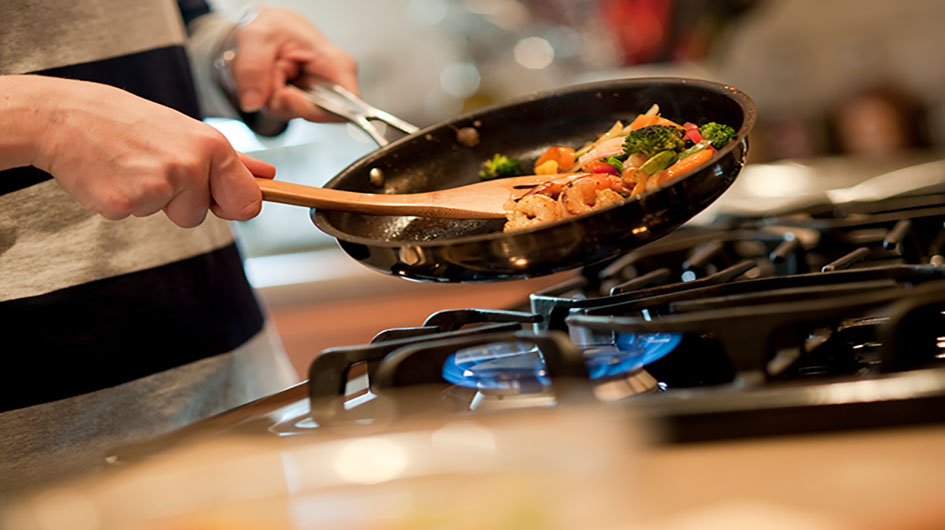Food Waste Disposer Guides, Kitchen Guide
Designing A Safe Kitchen – For Dummies
Kitchens, along with bathrooms, are among the most hazardous of all rooms in a house. Spilled liquids, grease, falls and fires are just some of the safety issues that have to be considered when planning any DIY kitchen projects.
Aside from specialized rules such as electrical regulations for kitchens and gas regulations for kitchens, most safety rules for kitchens are based on good common sense. Pay attention to these and it’s possible to reduce the likelihood of a bad kitchen accident by a considerable margin.

Don’t put stoves or ranges under windows or next to doors.
Blowing kitchen curtains could easily catch fire from hot burners or grease fires in a skillet.
Stoves also should not be placed near doors because people tend to congregate in such areas, or they may brush against a hot stove in passing.
Keep ovens and refrigerators or freezers separated from one another. For example, if the refrigerator and the stove must go on the same wall, be sure there’s a bank of cupboards between them. Also, make sure that the stove is well ventilated to remove the heat. Otherwise, the motor in the refrigerator or freezer will have to work harder to keep things cool, and it most likely will burn out. A refrigerator that doesn’t keep cold food stored at 40 degrees F or below will allow the growth of bacteria. Result: food poisoning!
Keep refrigerators out of corners. These appliance doors must open wider than 90 degrees so that shelves can be removed for cleaning.
Keep the stove away from the sink, at least 24 inches (600 mm). This is to minimize the possibility that water will splash into hot fat and cause it to explode, possibly igniting a fire.
Keep a fire blanket within easy reach of the stove at all times in case hot grease catches fire.
Smothering is the best extinguisher for a hot fat fire because it deprives the fire of oxygen without spreading the burning grease around to ignite other parts of the room.
Remember the kitchen work triangle for safety as well as efficiency.
Don’t put the refrigerator in an area where hot utensils will be transferred, to avoid running into people getting food from the fridge. Try to keep the traffic flow away from the stove or food preparation working spaces. If this isn’t possible, try to minimize traffic encounters as much as possible when cooking.
Think about installing non-slip flooring material in the kitchen. Between stray drops of water, inevitable food spills and other liquid hazards, non-slip flooring may save many a fall. Area rugs can be helpful in front of the stove and the sink, but make sure they’re well-anchored and made of a low pile to reduce the possibility of tripping.

Pay attention to kitchen lighting. For example, kitchen island lighting could involve pendant lamps, which provide focused light for task work. However, be sure that the pendants hang at levels where people aren’t likely to bump their heads or get pendants on extendable cords to raise and lower them as needed.
Keep your wits about you in the kitchen and you’ll avoid most mishaps.










Leave a reply